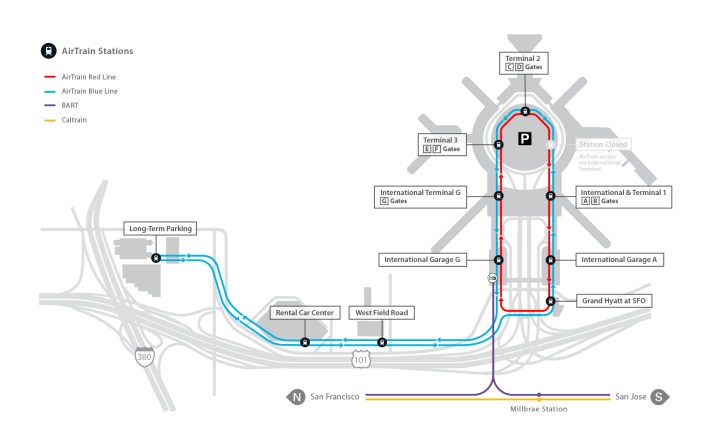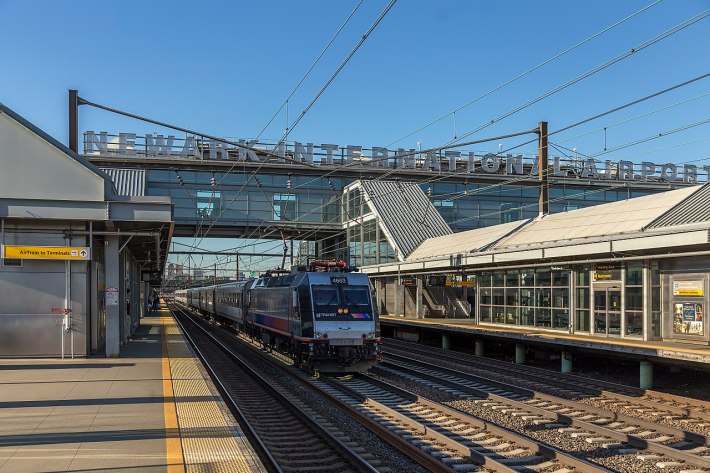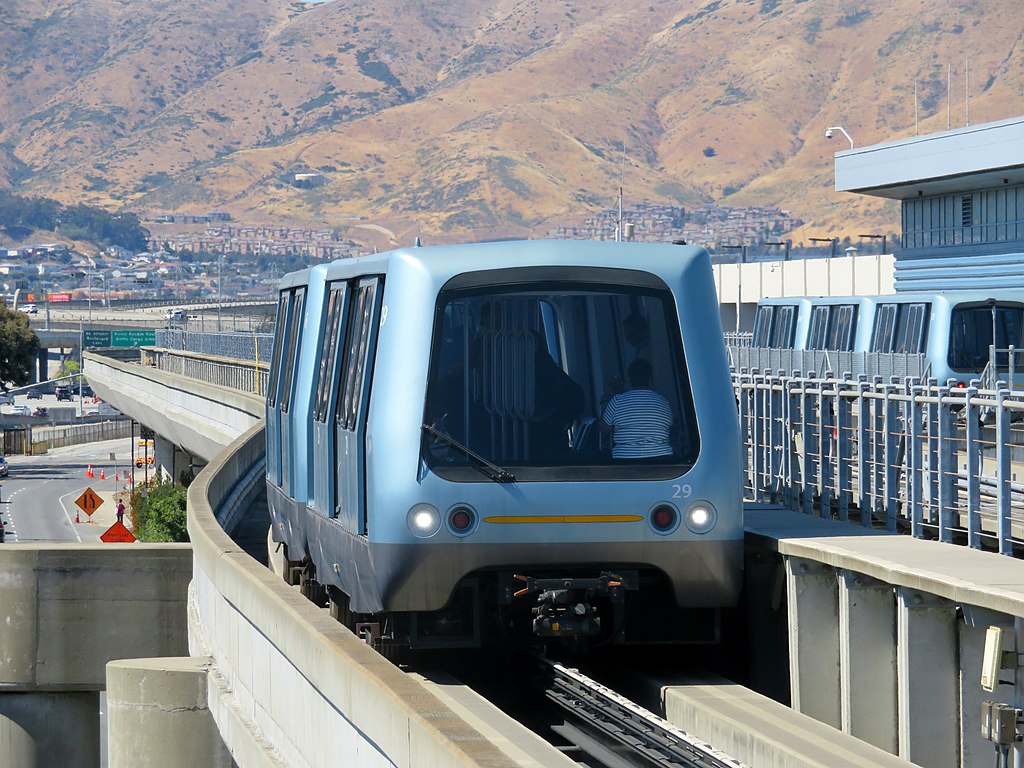Note: GJEL Accident Attorneys regularly sponsors coverage on Streetsblog San Francisco and Streetsblog California. Unless noted in the story, GJEL Accident Attorneys is not consulted for the content or editorial direction of the sponsored content.
San Francisco's airport received a “Gold” certification from the Leadership in Energy and Environmental Design (LEED) program developed by the U.S. Green Building Council late last week for extending its people mover train to a giant parking garage. “The completion of the AirTrain extension to Long-Term Parking realized our vision to provide a seamless, clean energy connection between all of our terminals, parking, hotel and rental car facilities,” said Airport Director Ivar C. Satero, in a prepared statement. “At the same time, the project continued our tradition of industry leadership in sustainable building design, construction, and operation. This LEED Gold certification is a tribute to the dedicated project team who transformed this vision into reality.”
Why is the airport getting an environmental award for a project that makes it more convenient to drive? "It's not a surprise that SFO earned LEED Gold for its new people mover. SFO is no stranger to LEED certification as its Terminal 2 was awarded as the first LEED Gold airport terminal in the country. It is ironic, though, that a project celebrated for its sustainability would serve as a bridge between two of the most significant sources of air pollution in the Bay Area," wrote SPUR's Nick Josefowitz, in an email to Streetsblog.
Deisy Verdinez of the U.S. Green Building Council told Streetsblog that construction projects get different degrees of award depending on many criteria, including using recycled materials, solar panels and, when applicable, transit connections.

As seen in the map above, the $259 million construction project prioritized extending the AirTrain guideways - in blue - to long-term parking, instead of to the Millbrae Caltrain and future High-Speed Rail station (bottom, along the yellow line), which is less than a mile from the alignment.
"We don’t expect this extension to cause a shift in what mode people use to get to/from the airport," wrote airport spokesperson Doug Yakel in response to a question about why the airport would want to make it easier to drive to the airport and park. "What it does accomplish is the elimination of the shuttle buses which previously transported passengers between the parking garages and terminals. This extension eliminates 600,000 miles of bus trips annually."
Of course, airports in other countries often have direct, intercity, mainline rail connections that either go to multiple terminals or connect directly to an airport people mover system. In fact, one only has to travel to someplace as "exotic" as New Jersey to see an example (see pic below of the Newark Airport Station where people can transfer from Amtrak and commuter trains to the airport people-mover system).

BART, of course, connects to the people mover. So it's possible to take Caltrain (the yellow line on the map) to the airport, but it requires a time-consuming transfer to BART (or a bus) to the people mover (the red and blue lines on the map). The transfers make the trip awkward, expensive, and just generally unappealing.
"We all want that connection to be as seamless as possible," wrote the California High-Speed Rail Authority's Michele Boudreau, in an email to Streetsblog. She added that a direct people-mover connection is part of SFO's long-term planning, and they hope someday the Millbrae station will act like an additional airport terminal. However, "It’s not currently in our lineup of construction projects, but we’re closely monitoring the progress of HSR," said SFO's Yakel.





